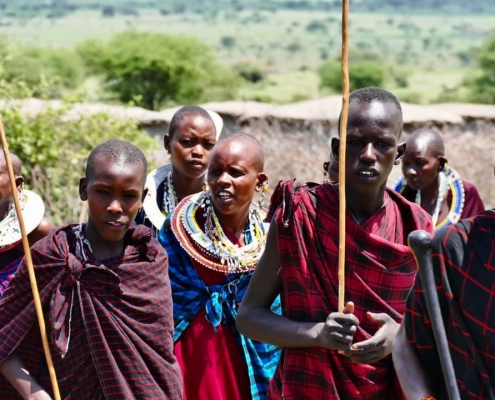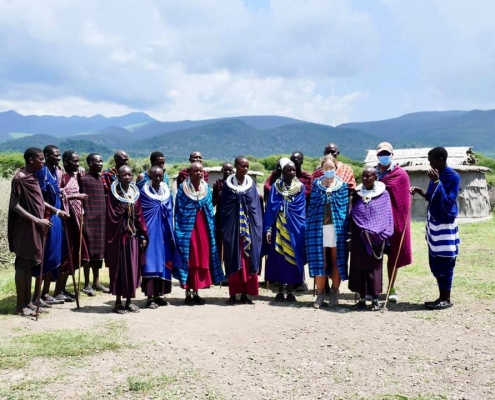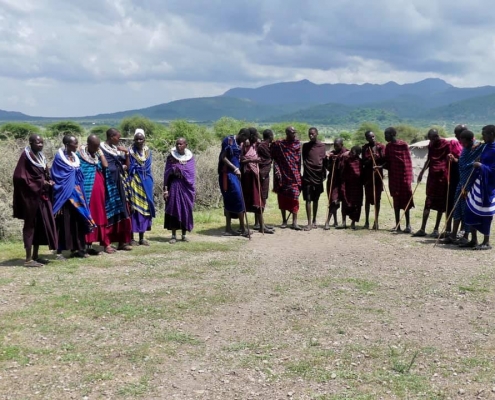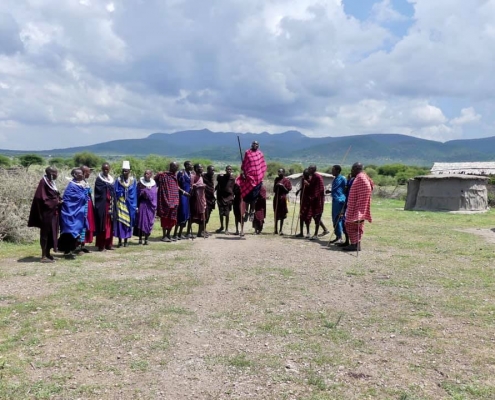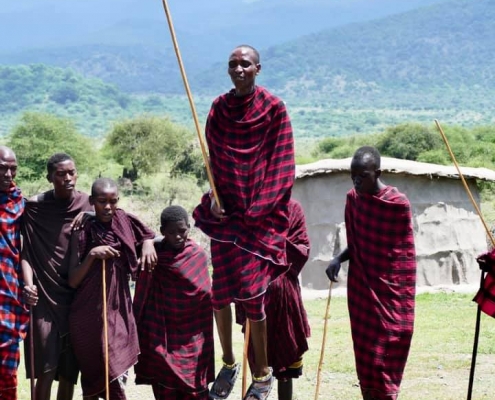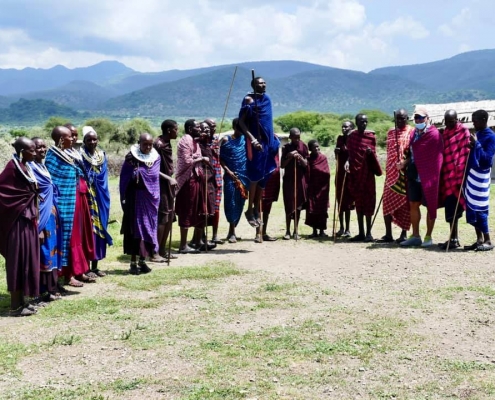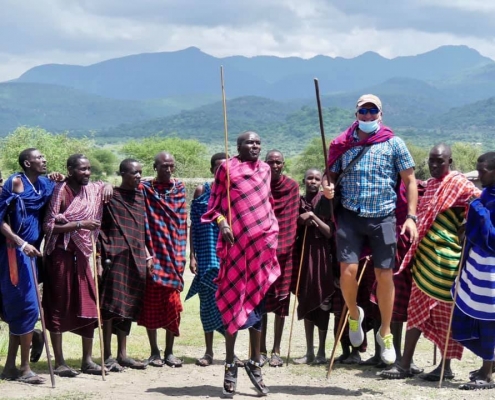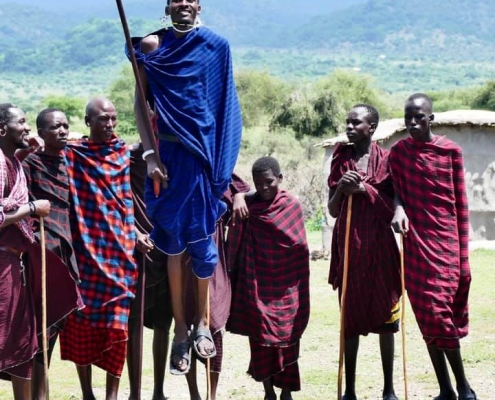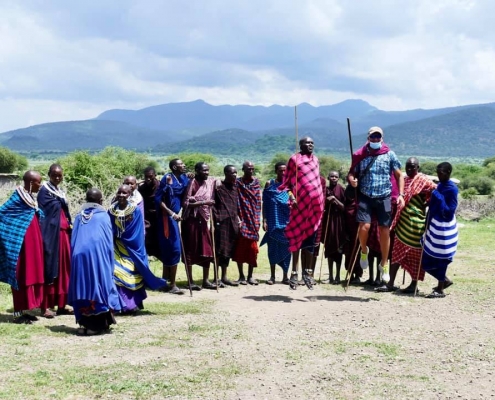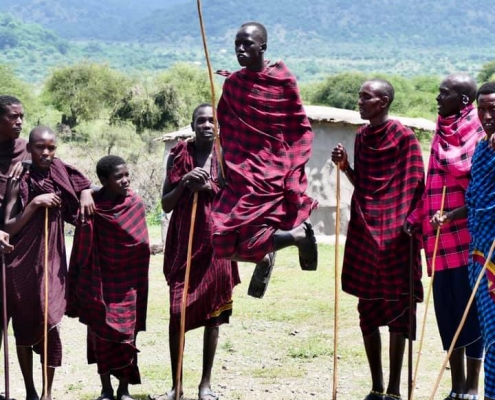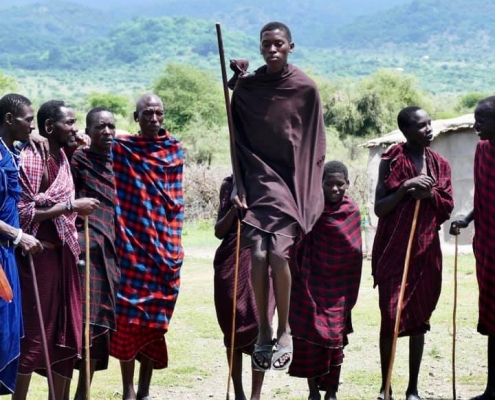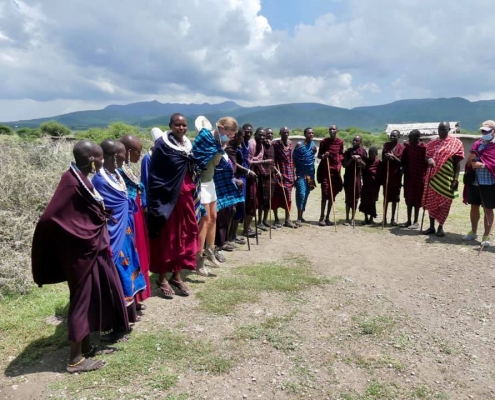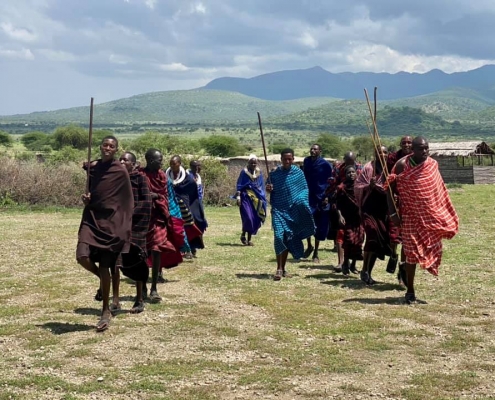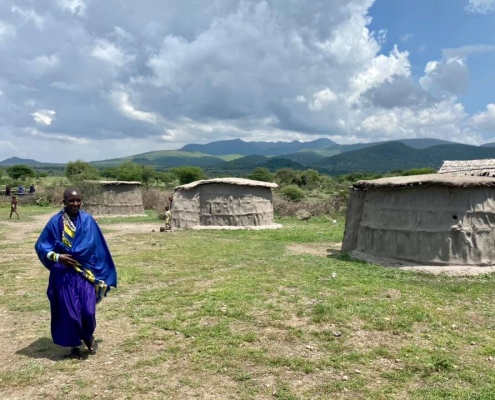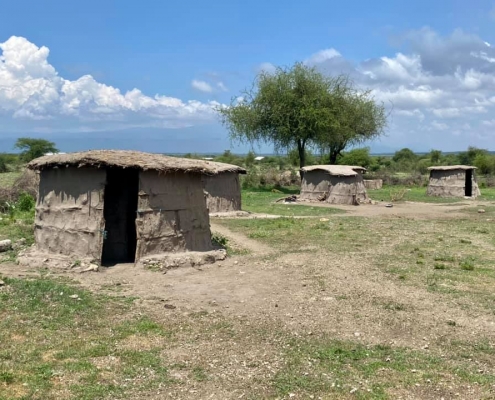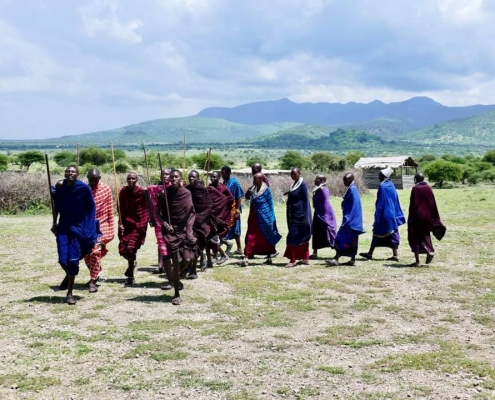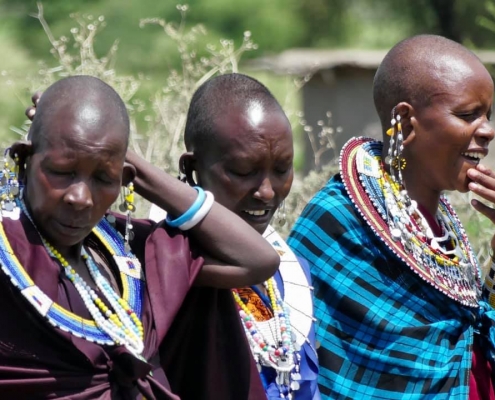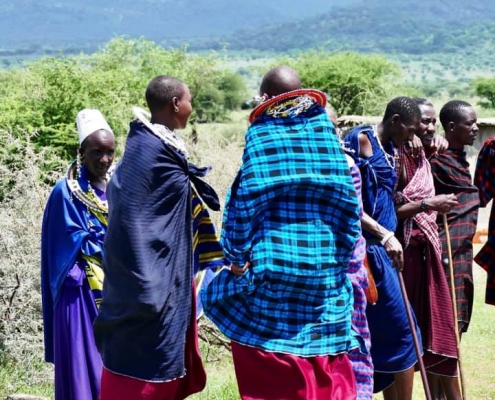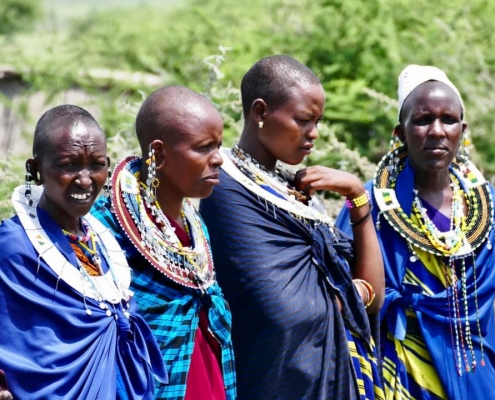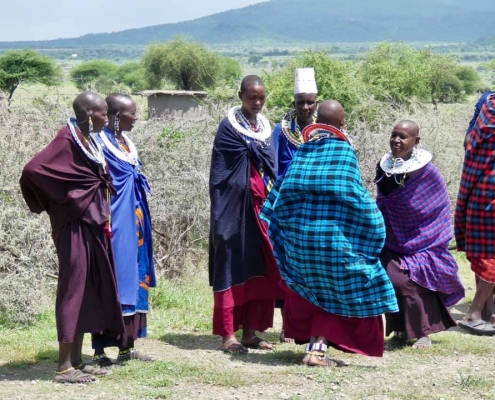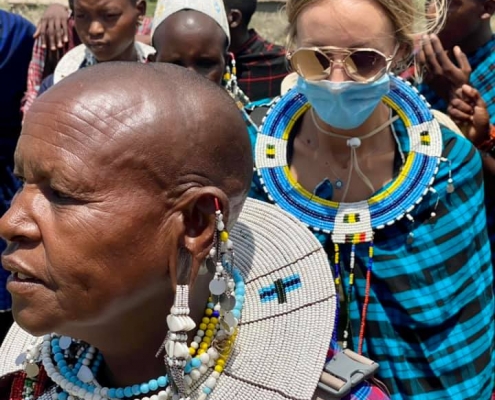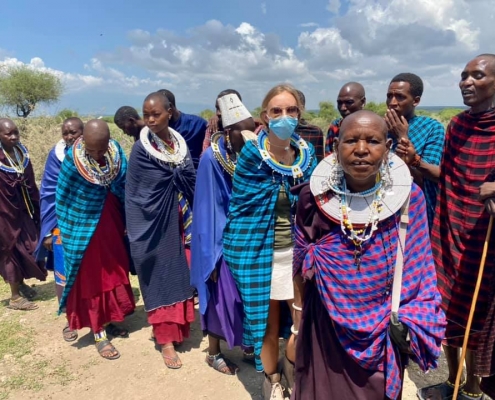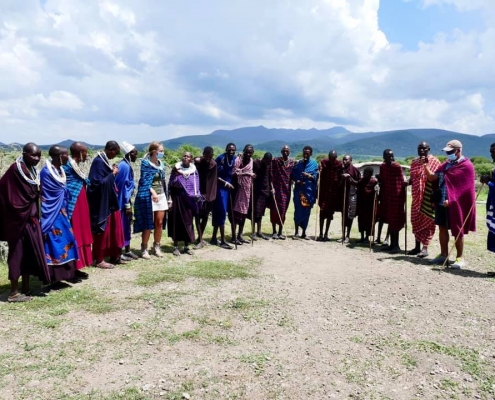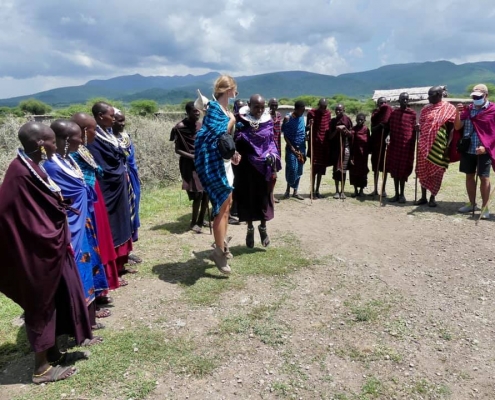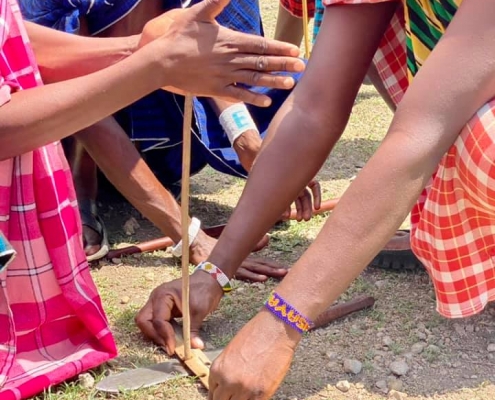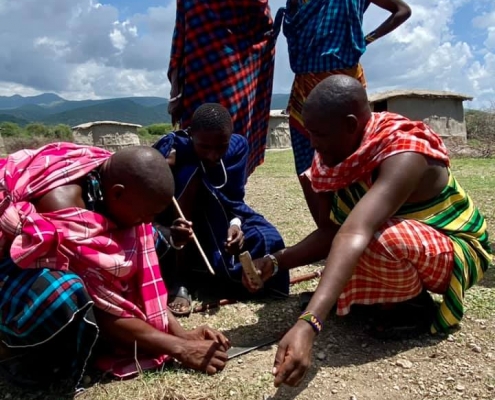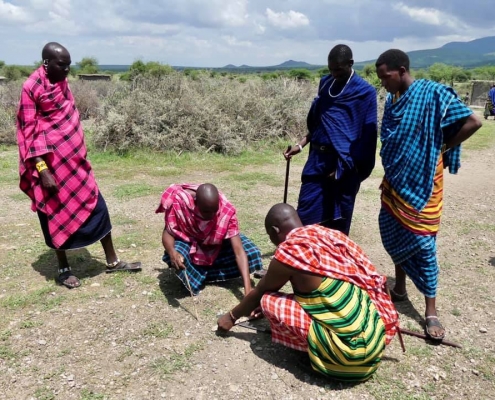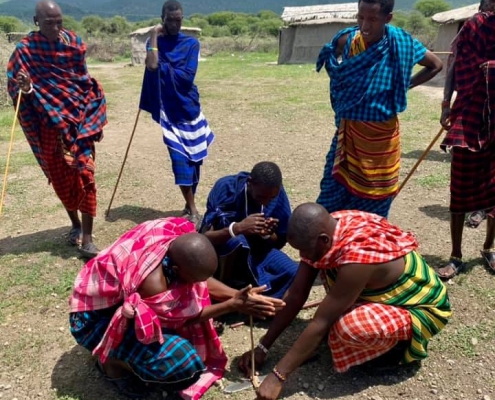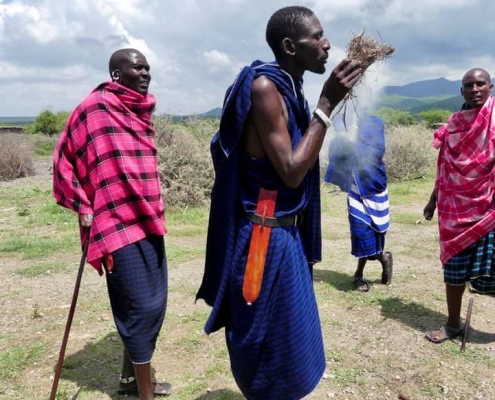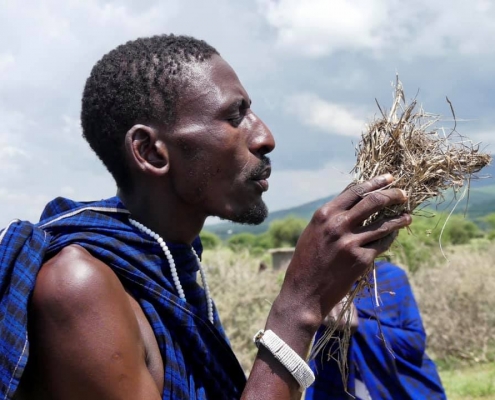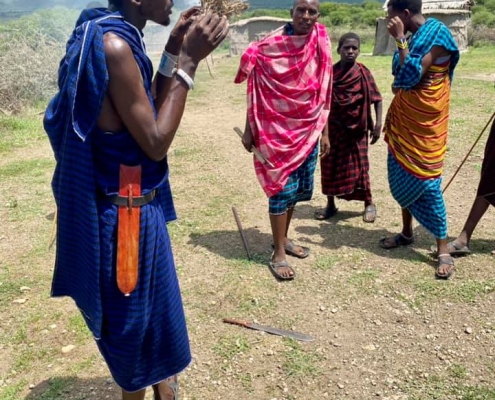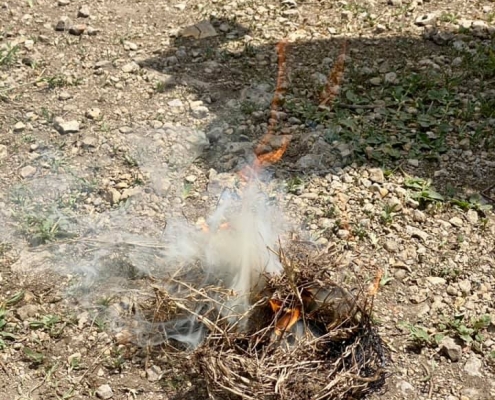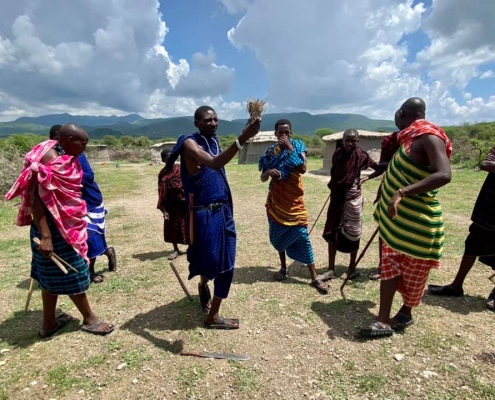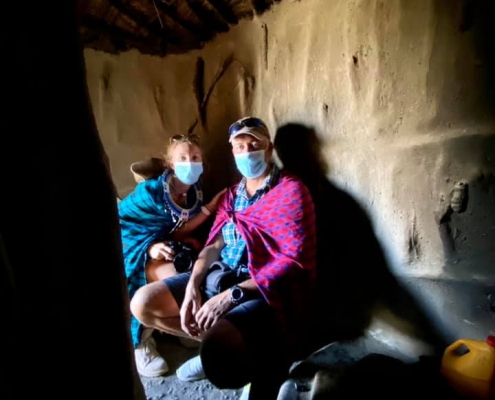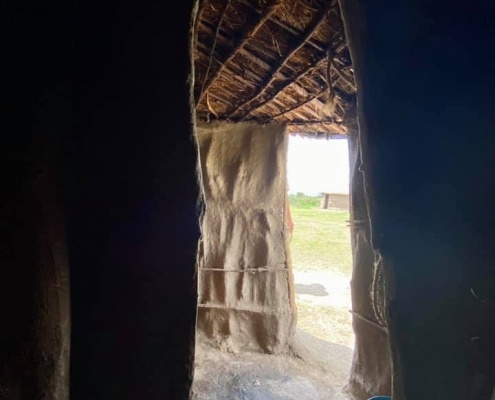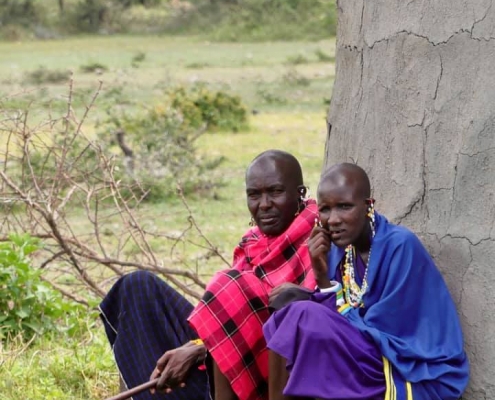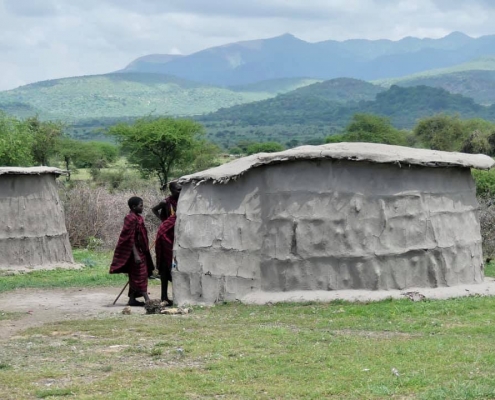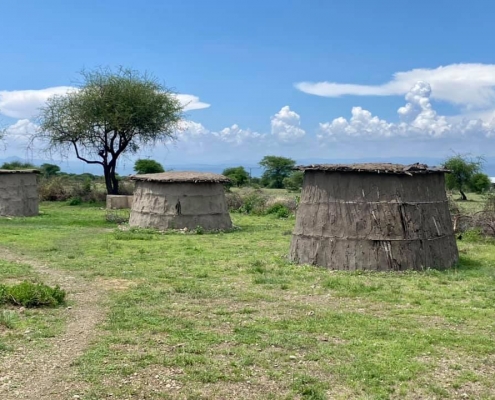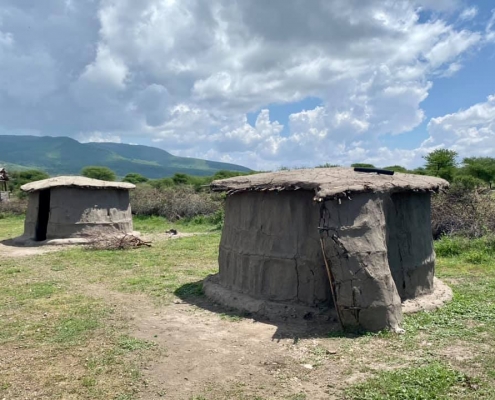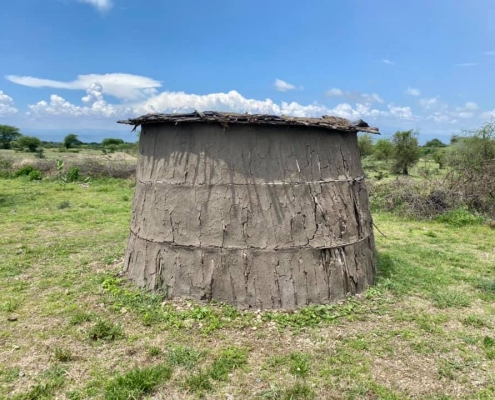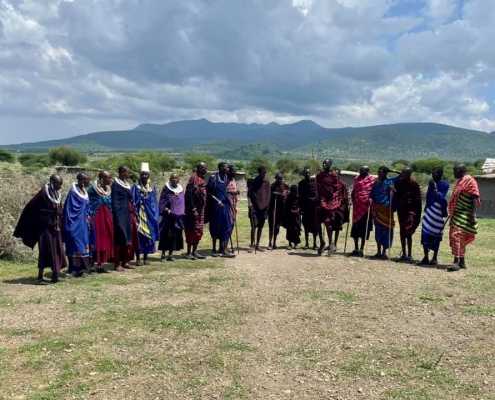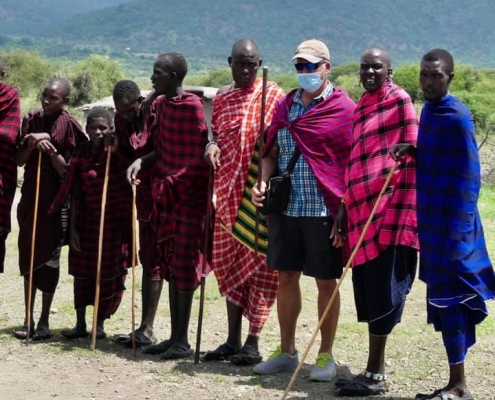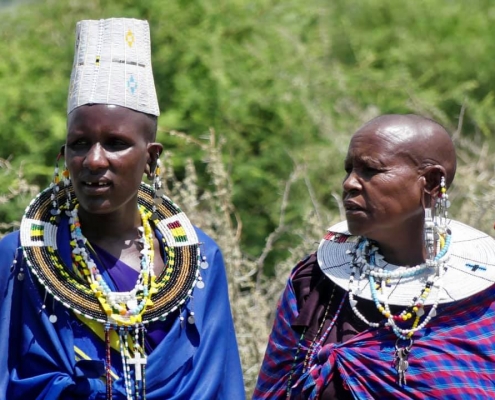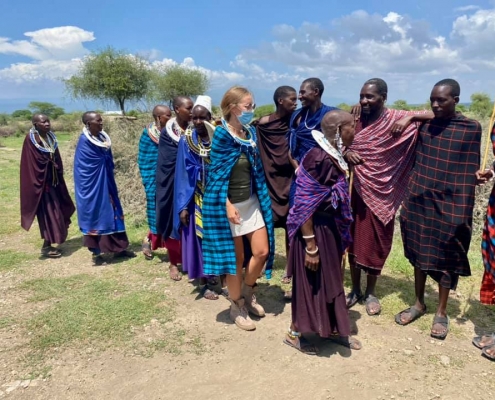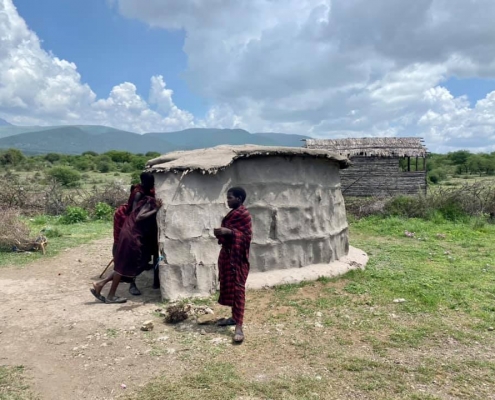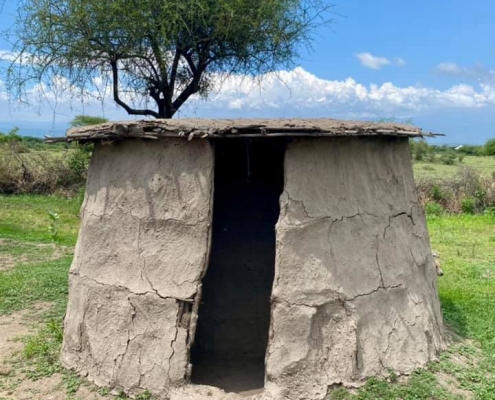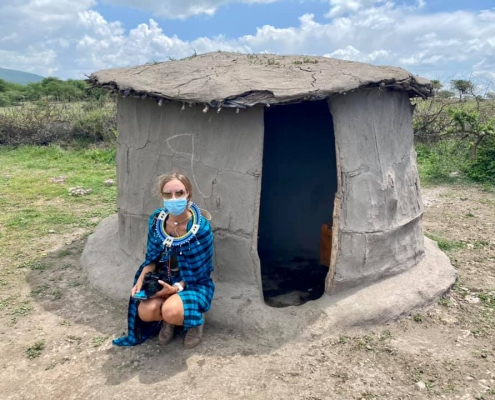Tanzania: Visiting Maasai Village
We had an absolutely unique opportunity to visit an authentic Maasai village, not a tourist trap with souvenirs shops, but a real village off the beaten path where Maasai people lead their daily life preserving their unique and totally fascinating culture and traditions. We were greeted by a traditional dance and songs, then we participated in the jumping competition, then we visited several houses and checked it around inside, before witnessing a fire-starting ceremony using dry sticks and elephant dung. Maasai populate northern Tanzania and southern Kenya (close to 1.5 million people) and up to this day preserve very unusual traditions. Maasai are herders, the money is mostly useless here and the wealth is counted in cattle primarily, and to a lesser extent in the number of children. Maasai are polygamous and every guy has about 10 or so wives, with marriages pre-arranged and wife costing 7 cows on average, and each wife bearing close to a dozen kids (child mortality is very high and children are not even named until 3 months old to make sure some survive). Men are in charge of herding, while women built houses (from cow dung and mud) and take care of children. Women can’t divorce or remarry. Maasai diet consists of only three things – beef, milk, and cow blood (cows are just used for periodic bloodletting), no fruits, no vegetables, no farming whatsoever. Occasionally, lamb and goat meet is added to the diet for special occasions. Maasai wear colorful clothes – red for men and blue for women – with a lot of trinkets and bling, and men carry traditional weapons and wooden clubs. Most have bald heads, cut and stretched ear lobes, removed front teeth, and skin often painted red with clay. Maasai speak their own Maa language and have their own god, who is dualistic in nature – benevolent Black God and vengeful Res God.

